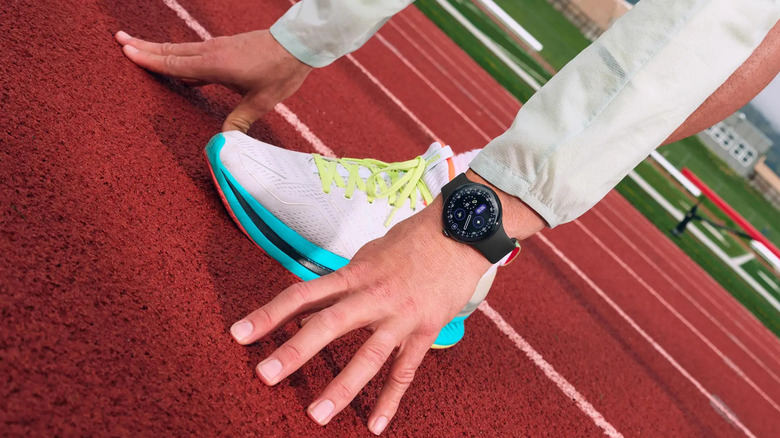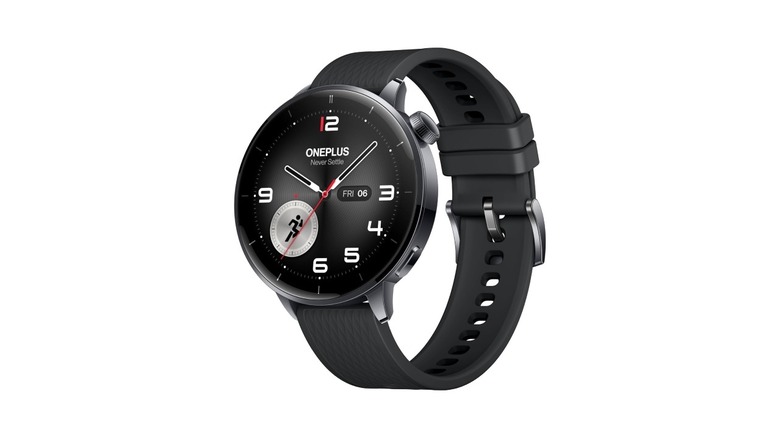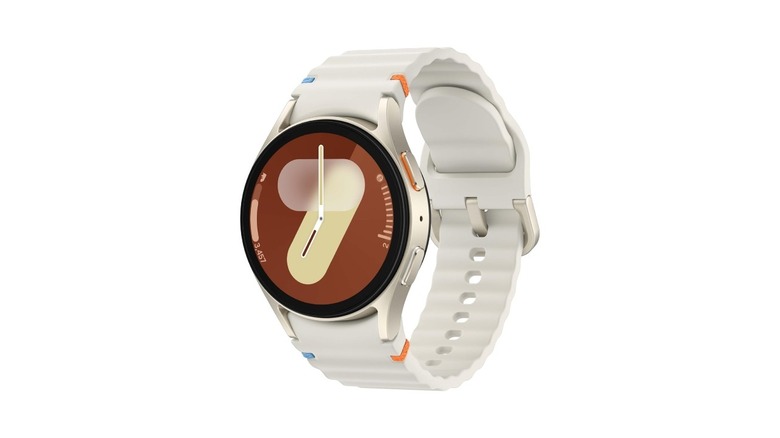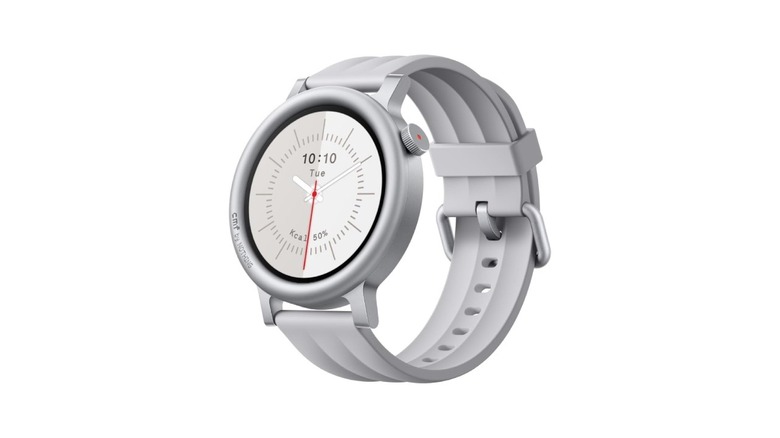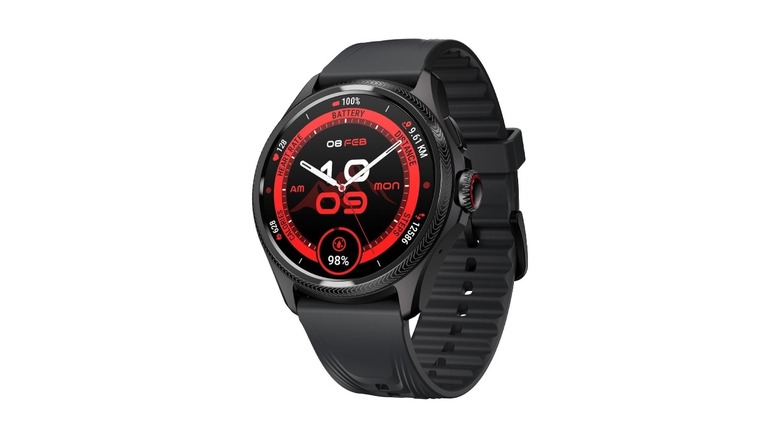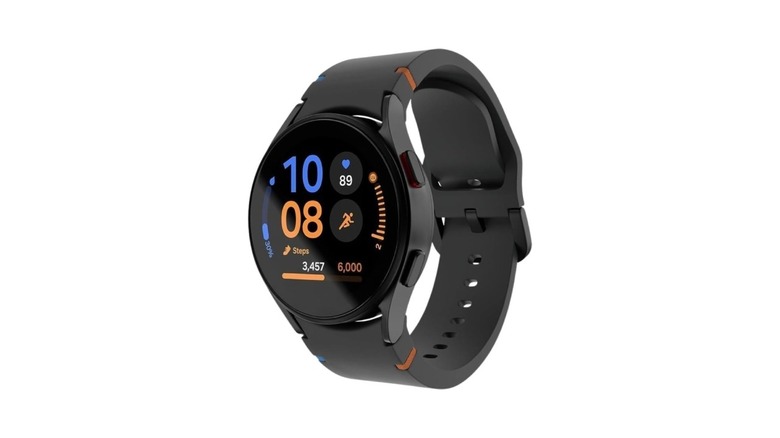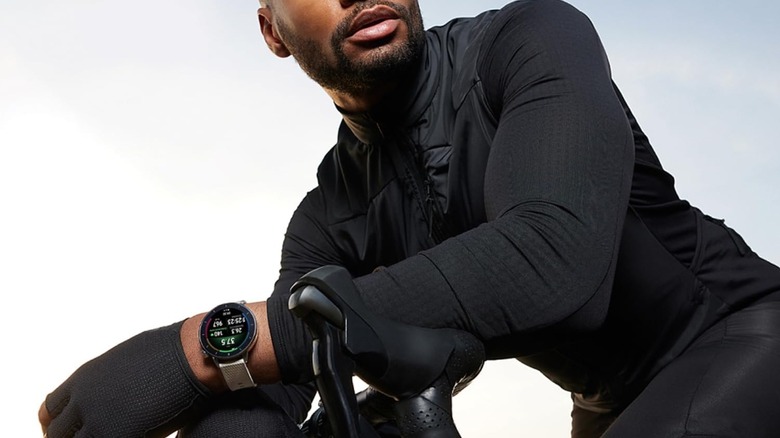5 Cheaper Alternatives To The Pixel Watch 4
We may receive a commission on purchases made from links.
Smartwatches have become as ubiquitous as smartphones in recent years. For good reason too, since a good smartwatch is a portal to get insights into one's health and fitness. From heart rate and SpO2 levels to even ECG and blood pressure, smartwatches can even save lives by notifying you and calling emergency services in case of a mishap. Apart from tracking workouts and fitness levels, another good use case for a smartwatch is to view incoming calls and notifications. While an Apple Watch is widely regarded as the best smartwatch one can buy, it only works with an iPhone. The Google Pixel Watch 4 is an equivalent competitor on the Android side of things, but it's also quite expensive. Not everyone wants to spend close to $400 on a smartwatch, especially since smartphones have also gotten expensive. So, we've put together a list of five cheaper alternatives to the Google Pixel Watch 4.
The best part about using an Android smartphone is the wide variety of smartwatch options. Whether you want one that can run third-party apps like a phone, or you only want a simple fitness tracker without any bells and whistles, we've got you covered. We've included smartwatches that prioritize battery life, the accuracy of health metrics, and software features. The recommendations have been made based on personal experience with these smartwatches by SlashGear writers, so you can rest assured that you're getting the best value for your money without having to compromise on features.
OnePlus Watch 3
OnePlus has been doing a phenomenal job with its wearable devices lately, and the OnePlus Watch 3 is no exception. It's undoubtedly one of the most well-rounded Wear OS smartwatches out there at the moment, thanks to its premium design, large display, a host of fitness features, and most importantly, up to 60 hours of battery life. That sort of battery life is rare to see on a Wear OS smartwatch, so it's commendable that OnePlus has managed to achieve it. For those wondering, the OnePlus Watch 3 smartly switches between the fully functional Wear OS UI and a more barebones version depending on the required use case. This helps it consume less power when just displaying the time or tracking an outdoor run. While endurance is one of its biggest strengths, the Watch 3 is also impressive in other respects.
The 1.32-inch OLED display has an always-on display, which, coupled with the slim bezels, gives the watch a premium look. Then, there is your usual set of features, such as heart rate monitoring, SpO2 tracking, workout modes for running, cycling, swimming, etc., along with GPS navigation. Since the Watch 3 runs on Wear OS, you get access to third-party apps like Strava, Spotify, WhatsApp, etc., straight on the watch. While it misses out on features such as ECG and BP monitoring due to the lack of FDA approval, you're getting a solid smartwatch that fares well across multiple parameters.
Samsung Galaxy Watch 7
Samsung's Galaxy Watch series is the default option for most users with a Samsung smartphone. While it's definitely among the best options for Android users, the latest Galaxy Watch 8 is rather pricey. Thankfully, the last-gen Galaxy Watch 7 isn't too different from the latest model, and it's available for a fraction of the price. For $185, the Galaxy Watch 7 has a good set of health-oriented features, such as blood pressure monitoring, ECG, heart rate tracking, body composition measurement, and sleep monitoring. Of course, you also get the usual set of workout modes. The watch runs on Wear OS with Samsung's One UI Watch on top. The interface is hands down the best when it comes to smartwatches in the Android world.
Unlike the OnePlus Watch 3, the Galaxy Watch 7 is available in two sizes: 40mm and 44mm. This way, you can pick the right one for your wrist. Similarly, there's also an LTE version of the watch that can be connected to an eSIM. Like most Wear OS-based smartwatches, the Galaxy Watch 7 will last you anywhere from 24-30 hours on a single charge, so you may have to charge it either every night before going to bed or in the morning as soon as you wake up if you want to track your sleep. For all the Samsung users out there, the Galaxy Watch fits perfectly into Samsung's ecosystem, so you can't go wrong with it.
CMF Watch 3 Pro
Nothing's sub-brand CMF has been launching some excellent value-for-money products, whether it's the CMF Phone 2 Pro or the CMF Buds 2 Plus launched earlier this year. Another addition to that portfolio is the CMF Watch 3 Pro. Unlike the Galaxy Watch or the OnePlus Watch, the CMF Watch 3 Pro runs on a version of RTOS instead of Wear OS. While this drastically reduces its functionality in terms of third-party app support, GPS navigation, and contactless payments, it has most of the fitness features that the average consumer would require. For instance, you can track steps, distance walked, calories burned, sleep, and workouts like running, swimming, and cycling. However, there's no ECG or BP monitoring.
That's acceptable considering the price, though. For just $99, the CMF Watch 3 Pro offers a good set of features for anyone who's just starting to work out or for those who don't want to spend a lot of money on a wearable device. Despite being affordable, the Watch 3 Pro has a sophisticated design that looks attractive. While it lacks support for third-party apps, additional functionality like viewing and replying to notifications, receiving incoming calls, and setting custom watch faces is present. Nothing claims that the CMF Watch 3 Pro can last up to two weeks on a single charge, making it the best option for those who don't want to charge their smartwatch every day.
TicWatch Pro 5
The TicWatch Pro 5, despite being almost two years old at this point, is still an excellent Wear OS smartwatch for those who prioritize battery life and aesthetics. It's arguably one of the best-looking smartwatches, thanks to a sporty design with a premium metallic bezel. The highlight of the TicWatch Pro 5 is its dual display technology that helps conserve battery. When using the watch in Wear OS mode, it uses the main OLED display. However, when the watch is only being used to display the time, date, and other basic information, the watch switches to a secondary display that resembles a seven-segment screen on digital watches. The monochrome display sips power, resulting in a total battery life of about 90 hours. That's more than three full days of battery life on a single charge, which is almost unheard of in the Wear OS world.
In terms of features, the TicWatch Pro 5 gets all the fitness tracking sensors, workout modes, and GPS — just like most other watches. You also get NFC for contactless payments. While the TicWatch Pro 5 launched at a higher price, the cost has dropped over time and is now available for close to $150. Along with excellent battery life, the TicWatch Pro 5 can also charge rather quickly, with a 30-minute charge resulting in up to two days of battery life. If you travel often and don't want to carry your smartwatch's charger with you all the time, the TicWatch Pro 5 is an ideal option.
Samsung Galaxy Watch FE
Samsung revamped its smartwatches with the Galaxy Watch 4, giving them new processors and the goodness of Wear OS. Even today, the Galaxy Watch 4 runs the latest Wear OS version and has pretty much all the health features one would expect from a smartwatch and more. That said, the Galaxy Watch 4 is too old to recommend in late 2025, and Samsung realized that. That's exactly why the brand launched the Galaxy Watch FE — an updated version of the Galaxy Watch 4. It has a design similar to the Galaxy Watch 7, albeit with slightly older internals. The display is an OLED panel that's available in 40mm or 44mm variants. As for features, the usual heart rate monitor, SpO2 sensor, and body composition measurement are present. You can also pick from a variety of workout modes to track your runs and swims.
The best part is that, despite being a budget-oriented smartwatch, the Galaxy Watch FE offers features such as blood pressure monitoring and ECG, making it an excellent choice for those with heart issues who want to keep a constant tab on their health. Since it runs on Wear OS, you also get access to the Play Store to download third-party apps. The Galaxy Watch FE can be had for around $100, which is an absolute steal for what it offers. Notably, the battery life is quite average since it's an older model with a small cell. You will have to charge the watch every day.
How we picked the smartwatches
All recommendations in this article were made based on the experience of the writer and other SlashGear reviewers. We've taken into account factors such as accuracy, reliability, and battery life. A smartwatch needs to have important features like automatic workout tracking, support for multiple types of workouts, and an always-on display so that it appears like a standard watch. We've made sure that all the watches mentioned in this article have these necessary features. Notably, Samsung's smartwatches will work best with Samsung smartphones, especially since features like ECG and blood pressure monitoring can only be enabled when paired with a Samsung phone.
Apart from fitness tracking, the smartwatches on this list also support additional features such as replying to notifications, customizable watch faces, and answering calls via Bluetooth. Along with the watch's interface, the companion smartphone app is also equally important, since that's where you would view all the recorded stats and figures. Since all the smartwatches on this list are from reputable manufacturers, the companion app works well. Finally, we've also made sure the smartwatches have a modern design that looks premium when worn on the wrist.
